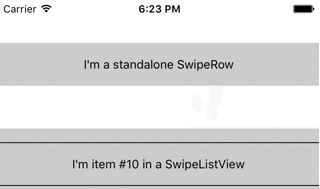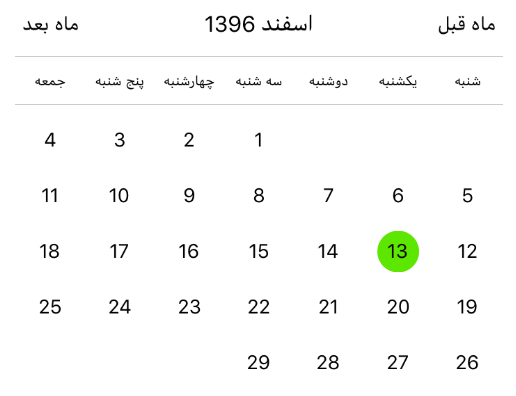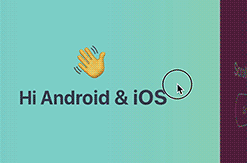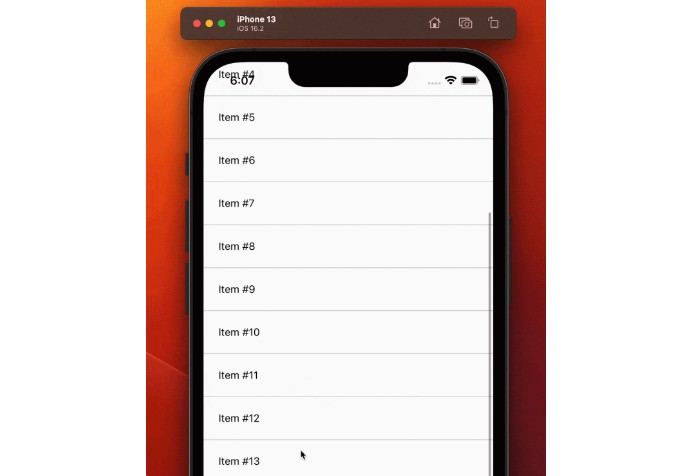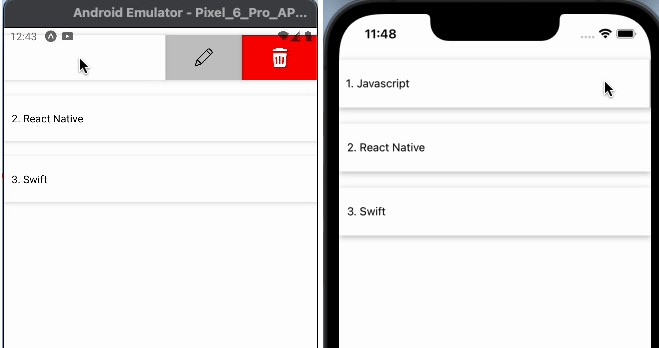react-native-swipe-list-view
SwipeListView now supports FlatList!
Please see the section Migrating To FlatList for all details.
You can continue to use the (deprecated) ListView component, however there are some BREAKING CHANGES that are explained in that section as well
<SwipeListView> is a ListView with rows that swipe open and closed. Handles default native behavior such as closing rows when ListView is scrolled or when other rows are opened.
Also includes <SwipeRow> if you want to use a swipeable row outside of the <SwipeListView>
Example


Try it out! https://snack.expo.io/@jemise111/react-native-swipe-list-view
Installation
npm install --save react-native-swipe-list-view
Running the example
The application under ./SwipeListExample will produce the above example. To run execute the following:
git clone https://github.com/jemise111/react-native-swipe-list-view.gitcd react-native-swipe-list-viewcd SwipeListExampleyarnreact-native run-ios | react-native run-android
Usage
import { SwipeListView } from 'react-native-swipe-list-view';
render() {
return (
<SwipeListView
useFlatList
data={this.state.listViewData}
renderItem={ (data, rowMap) => (
<View style={styles.rowFront}>
<Text>I am {data.item} in a SwipeListView</Text>
</View>
)}
renderHiddenItem={ (data, rowMap) => (
<View style={styles.rowBack}>
<Text>Left</Text>
<Text>Right</Text>
</View>
)}
leftOpenValue={75}
rightOpenValue={-75}
/>
)
}
See example.js for full usage guide (including using <SwipeRow> by itself)
Note:
If your row is touchable (TouchableOpacity, TouchableHighlight, etc.) with an onPress function make sure renderItem returns the Touchable as the topmost element.
GOOD:
renderItem={ data => (
<TouchableHighlight onPress={this.doSomething.bind(this)}>
<View>
<Text>I am {data.item} in a SwipeListView</Text>
</View>
</TouchableHighlight>
)}
BAD:
renderItem={ data => (
<View>
<TouchableHighlight onPress={this.doSomething.bind(this)}>
<Text>I am {data.item} in a SwipeListView</Text>
</TouchableHighlight>
</View>
)}
Manually closing rows:
If your row or hidden row renders a touchable child and you'd like that touchable to close the row note that the renderItem and renderHiddenItem functions are passed rowData, rowMap. The rowMap is an object that looks like:
{
row_key_1: ref_to_row_1,
row_key_2: ref_to_row_2
}
Where each row_key is the same key used by the FlatList taken either from the key property on your data objects or using the keyExtractor prop.
Each row's ref has a public method called closeRow that will swipe the row closed. So you can do something like:
<SwipeListView
renderHiddenItem={ (rowData, rowMap) => {
<TouchableOpacity onPress={ _ => rowMap[rowData.item.key].closeRow() }>
<Text>I close the row</Text>
</TouchableOpacity>
}}
/>
If you are using the standalone <SwipeRow> you can just keep a ref to the component and call closeRow() on that ref.
Per row behavior:
If you need rows to behave independently you can return a <SwipeRow> in the renderItem function. Make sure you import the <SwipeRow> in addition to the <SwipeListView>. See the example below and the docs under API for how to implement a custom <SwipeRow>. There is also a full example in example.js.
The following values can be dynamic by passing them as props on the <SwipeRow>:
leftOpenValuerightOpenValuestopLeftSwipestopRightSwipecloseOnRowPressdisableLeftSwipedisableRightSwiperecalculateHiddenLayoutdirectionalDistanceChangeThreshold
import { SwipeListView, SwipeRow } from 'react-native-swipe-list-view';
<SwipeListView
dataSource={dataSource.cloneWithRows(data)}
renderItem={ (rowData, rowMap) => (
<SwipeRow
disableRightSwipe={parseInt(rowId) % 2 !== 0}
disableLeftSwipe={parseInt(rowId) % 2 === 0}
leftOpenValue={20 + parseInt(rowId) * 5}
rightOpenValue={-150}
>
<View style={styles.rowBack}>
<Text>Left Hidden</Text>
<Text>Right Hidden</Text>
</View>
<View style={styles.rowFront}>
<Text>Row front | {data.item.key}</Text>
</View>
</SwipeRow>
)}
/>
Setting per row behavior using data
You can also customize your individual rows by passing in your row's data next props:
leftOpenValuerightOpenValuecloseOnRowPressdisableLeftSwipedisableRightSwipestopLeftSwipestopRightSwipe
Example:
const dataSource = [
{
name: 'Andy',
age: 12,
disableRightSwipe: true,
},
{
name: 'Betty',
age: 11,
leftOpenValue: 150,
},
{
name: 'Carl',
age: 11,
},
];
Migrating To FlatList
In most ways migrating your SwipeListView is no different than migrating your typical RN ListView (renderRow -> renderItem, renderHiddenRow -> renderHiddenItem). The biggest difference is the identifier used to keep track of row ref's. Previously this was done using a unique hash for each row that looked like ${secId}${rowId}. Now, since FlatList requires the use of a unique key for each piece of data, the SwipeListView uses this unique key to keep track of row refs in place of the unique hash.
The biggest breaking change you will find is the signature of certain callback functions used to pass the secId and rowId as two separate arguments, whereas now they will pass one argument, the row's unique key.
e.g.
onRowOpen(secId, rowId, rowMap) {
// Grab reference to this row
const rowRef = rowMap[`${secId}${rowId}`];
// Do something with the row
rowRef.closeRow();
}
would now look like:
onRowOpen(rowKey, rowMap) {
// Grab reference to this row
const rowRef = rowMap[rowKey];
// Do something with the row
rowRef.closeRow();
}
The other breaking change introduced is how to do a slideout preview. If you'd like to do a slide out preview for one of the rows simply use the new prop previewRowKey and pass the key corrseponding with that row.
Here is a typical migration example:
BEFORE:
<SwipeListView
dataSource={this.ds.cloneWithRows(this.state.listViewData)}
renderRow={ (data, secId, rowId, rowMap) => (
<View>
<Text>I am {data} in a SwipeListView</Text>
</View>
)}
renderHiddenRow={ (data, secId, rowId, rowMap) => (
<View style={styles.rowBack}>
<TouchableOpacity onPress={ _ => rowMap[`${secId}${rowId}`].closeRow() }>
<Text>Close</Text>
</TouchableOpacity>
</View>
)}
leftOpenValue={75}
rightOpenValue={-150}
onRowOpen={(secId, rowId, rowMap) => {
setTimeout(() => {
rowMap[`${secId}${rowId}`].closeRow()
}, 2000)
}}
previewFirstRow={true}
/>
AFTER (Using FlatList):
<SwipeListView
useFlatList={true}
data={this.state.flatListData}
renderItem={ (rowData, rowMap) => (
<View>
<Text>I am {rowData.item.text} in a SwipeListView</Text>
</View>
)}
renderHiddenItem={ (rowData, rowMap) => (
<View style={styles.rowBack}>
<TouchableOpacity onPress={ _ => rowMap[rowData.item.key].closeRow() }>
<Text>Close</Text>
</TouchableOpacity>
</View>
)}
leftOpenValue={75}
rightOpenValue={-150}
onRowOpen={(rowKey, rowMap) => {
setTimeout(() => {
rowMap[rowKey].closeRow()
}, 2000)
}}
previewRowKey={this.state.flatListData[0].key}
/>
API
SwipeListView (component)
ListView that renders SwipeRows.
Props
useFlatList
Render list using React Native's FlatList
type: bool
defaultValue: false
closeOnRowPress
Should open rows be closed when a row is pressed
type: bool
defaultValue: true
closeOnScroll
Should open rows be closed when the listView begins scrolling
type: bool
defaultValue: true
closeOnRowBeginSwipe
Should open rows be closed when a row begins to swipe open
type: bool
defaultValue: false
directionalDistanceChangeThreshold
Change the sensitivity of the row
type: number
defaultValue: 2
leftOpenValue
TranslateX value for opening the row to the left (positive number)
type: number
defaultValue: 0
stopLeftSwipe
TranslateX value for stop the row to the left (positive number)
This number is the stop value corresponding to the leftOpenValue (while the row is swiping in the right direction)
type: number
stopRightSwipe
TranslateX value for stop the row to the right (negative number)
This number is the stop value corresponding to the rightOpenValue (while the row is swiping in the left direction)
type: number
renderHiddenItem
How to render a hidden row in a FlatList (renders behind the row). Should return a valid React Element.
This is required unless renderItem returns a <SwipeRow> (see Per Row Behavior).
type: func
params: (rowData, rowMap)
renderItem
How to render a row in a FlatList. Should return a valid React Element.
type: func
params: (rowData, rowMap)
renderHiddenRow [DEPRECATED]
How to render a hidden row (renders behind the row). Should return a valid React Element.
This is required unless renderRow returns a <SwipeRow> (see Per Row Behavior).
type: func
params: (rowData, secId, rowId, rowMap)
renderRow [DEPRECATED]
How to render a row. Should return a valid React Element.
type: func
params: (rowData, secId, rowId, rowMap)
rightOpenValue
TranslateX value for opening the row to the right (negative number)
type: number
defaultValue: 0
swipeToOpenPercent
What % of the left/right openValue does the user need to swipe
past to trigger the row opening.
type: number
defaultValue: 50
swipeToOpenVelocityContribution
Describes how much the ending velocity of the gesture affects whether the swipe will result in the item being closed or open. A velocity factor of 0 (the default) means that the velocity will have no bearing on whether the swipe settles on a closed or open position and it'll just take into consideration the swipeToOpenPercent. Ideal values for this prop tend to be between 5 and 15.
type: number
defaultValue: 0
disableLeftSwipe
Disable ability to swipe the row left
type: bool
defaultValue: false
disableRightSwipe
Disable ability to swipe the row right
type: bool
defaultValue: false
recalculateHiddenLayout
Enable hidden row onLayout calculations to run always.
By default, hidden row size calculations are only done on the first onLayout event
for performance reasons.
Passing true here will cause calculations to run on every onLayout event.
You may want to do this if your rows' sizes can change.
One case is a SwipeListView with rows of different heights and an options to delete rows.
type: bool
defaultValue: false
swipeGestureBegan
Called when a swipe row is animating swipe
type: func
params: (rowKey)
onRowClose
Called when a swipe row is animating closed
type: func
params: (rowKey, rowMap)
onRowDidClose
Called when a swipe row has animated closed
type: func
params: (rowKey, rowMap)
onRowOpen
Called when a swipe row is animating open.
This has a param of toValue which is the new X value the row (after it has opened). This can be used to calculate which direction the row has been swiped open.
type: func
params: (rowKey, rowMap)
onRowDidOpen
Called when a swipe row has animated open
type: func
params: (rowKey, rowMap)
onScrollEnabled
Called when scrolling has been enabled/disabled
type: func
params: (isEnabled)
swipeRowStyle
Styles for the parent wrapper View of the SwipeRow
type: object
listViewRef
Called when the ListView ref is set and passes a ref to the ListView
e.g. listViewRef={ ref => this._swipeListViewRef = ref }
type: func
params: (ref)
previewRowKey
Should the row with this key do a slide out preview to show that the list is swipeable
type: string
previewFirstRow [DEPRECATED]
Should the first SwipeRow do a slide out preview to show that the list is swipeable
type: bool
defaultValue: false
previewRowIndex [DEPRECATED]
Should the specified rowId do a slide out preview to show that the list is swipeable
- Note: This ID will be passed to this function to get the correct row index
- https://facebook.github.io/react-native/docs/listviewdatasource.html#getrowidforflatindex
type: number
previewDuration
Duration of the slide out preview animation
type: number
previewOpenValue
TranslateX value for the slide out preview animation
Default: 0.5 * props.rightOpenValue
type: number
previewOpenDelay
Add some delay before opening the preview row. Can be Usefull when you have enter animation.
type: number
friction
Friction for the open / close animation
type: number
tension
Tension for the open / close animation
type: number
SwipeRow (component)
Row that is generally used in a SwipeListView.
If you are rendering a SwipeRow explicitly you must pass the SwipeRow exactly two children.
The first will be rendered behind the second.
e.g.
<SwipeRow>
<View style={hiddenRowStyle} />
<View style={visibleRowStyle} />
</SwipeRow>
Props
closeOnRowPress
Should the row be closed when it is tapped
type: bool
defaultValue: true
directionalDistanceChangeThreshold
Change the sensitivity of the row
type: number
defaultValue: 2
friction
Friction for the open / close animation
type: number
leftOpenValue
TranslateX value for opening the row to the left (positive number)
type: number
defaultValue: 0
stopLeftSwipe
TranslateX value for stop the row to the left (positive number)
This number is the stop value corresponding to the leftOpenValue (while the row is swiping in the right direction)
type: number
stopRightSwipe
TranslateX value for stop the row to the right (negative number)
This number is the stop value corresponding to the rightOpenValue (while the row is swiping in the left direction)
type: number
onRowPress
Called when a swipe row is pressed.
type: func
params: ()
onRowOpen
Called when a swipe row is animating open. Used by the SwipeListView
to keep references to open rows.
type: func
params: (toValue)
onRowClose
Called when a swipe row is animating closed
type: func
params: ()
rightOpenValue
TranslateX value for opening the row to the right (negative number)
type: number
defaultValue: 0
swipeToOpenPercent
What % of the left/right openValue does the user need to swipe
past to trigger the row opening.
type: number
defaultValue: 50
setScrollEnabled
Used by the SwipeListView to close rows on scroll events.
You shouldn't need to use this prop explicitly.
type: func
tension
Tension for the open / close animation
type: number
disableLeftSwipe
Disable ability to swipe the row left
type: bool
defaultValue: false
disableRightSwipe
Disable ability to swipe the row right
type: bool
defaultValue: false
recalculateHiddenLayout
Enable hidden row onLayout calculations to run always
type: bool
defaultValue: false
style
Styles for the parent wrapper View of the SwipeRow
type: object
preview
Should the row do a slide out preview to show that it is swipeable
type: bool
defaultValue: false
previewDuration
Duration of the slide out preview animation
type: number
defaultValue: 300
previewOpenValue
TranslateX value for the slide out preview animation
Default: 0.5 * props.rightOpenValue
type: number
